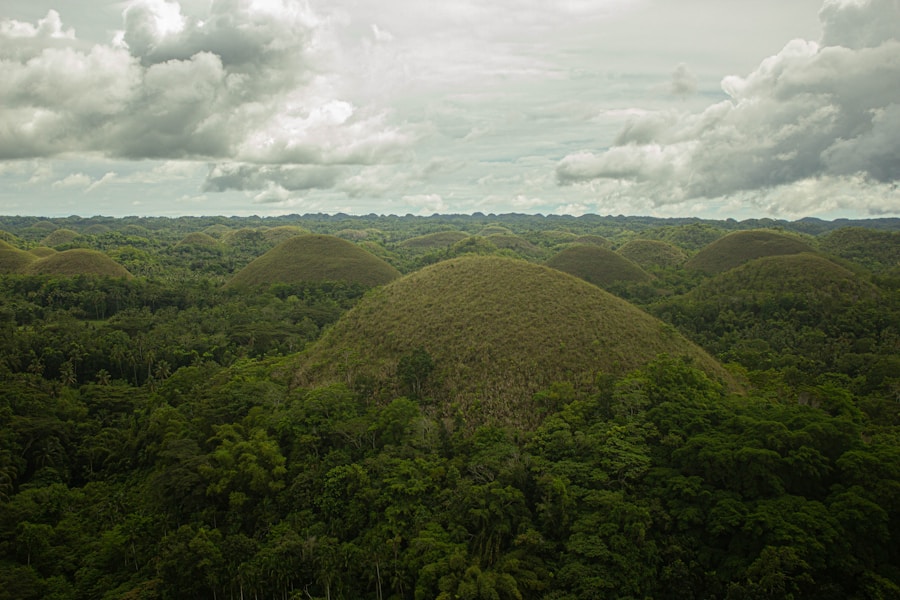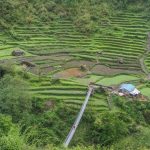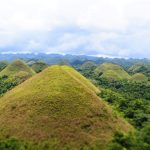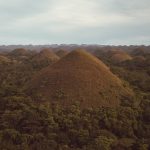Download links
How to install Marveling at the Majestic Chocolate Hills APK?
1. Tap the downloaded Marveling at the Majestic Chocolate Hills APK file.
2. Touch install.
3. Follow the steps on the screen.
Description
The Chocolate Hills, a geological wonder located in the Bohol province of the Philippines, are a striking natural formation that has captivated visitors and researchers alike. These hills, numbering over 1,200, rise dramatically from the surrounding landscape, creating a unique and picturesque panorama. The formation of these hills is attributed to a combination of geological processes that took place over millions of years.
The process began during the Pleistocene epoch when the area was submerged underwater. Over time, the uplift of the land and the subsequent exposure of limestone to the elements led to the gradual erosion of softer materials, leaving behind the distinctive conical shapes that we see today.
The region’s karst topography is characterized by its limestone formations, which are susceptible to dissolution by slightly acidic rainwater. This process creates sinkholes and underground rivers, contributing to the unique landscape.
The hills themselves are thought to have formed from coral deposits that accumulated on the seabed millions of years ago. As tectonic activity raised these deposits above sea level, they were sculpted into their current form by natural forces. The result is a series of symmetrical hills that vary in height, with some reaching up to 120 meters.
The hills are particularly famous for their chocolate-brown hue during the dry season, which is how they earned their name.
Key Takeaways
- The Chocolate Hills in the Philippines were formed by the uplift of coral deposits and the action of rainwater and erosion over millions of years.
- Visitors to the Chocolate Hills can enjoy breathtaking panoramic views and stunning landscapes, especially during the dry season when the grass-covered hills turn chocolate brown.
- Local legends and folklore surrounding the Chocolate Hills include stories of feuding giants and tears of a brokenhearted giantess, adding to the mystical allure of the area.
- The Chocolate Hills are home to a diverse range of flora and fauna, including rare orchids, birds, and butterflies, making it a haven for nature enthusiasts and wildlife lovers.
- Conservation efforts are in place to preserve the natural beauty and ecological significance of the Chocolate Hills, including reforestation projects and sustainable tourism practices.
Breathtaking Views and Scenic Landscapes
The visual appeal of the Chocolate Hills is undeniable, drawing tourists from around the globe who seek to experience their breathtaking beauty firsthand. The landscape is characterized by rolling hills that stretch as far as the eye can see, creating a mesmerizing undulating effect that is both calming and awe-inspiring. Visitors often flock to viewing platforms strategically placed at various elevations to capture panoramic photographs of this natural wonder.
The most popular viewpoint is located at the Chocolate Hills Complex in Carmen, where tourists can ascend a staircase to an observation deck that offers sweeping vistas of the hills below. The experience of standing atop one of these viewpoints is nothing short of magical. As the sun rises or sets, the hills take on a golden hue, casting long shadows and creating a dramatic interplay of light and color.
During the rainy season, the lush greenery surrounding the hills contrasts beautifully with their brown tops, offering a different yet equally stunning perspective. The changing seasons bring varied landscapes; in the dry season, the grass covering the hills turns brown, resembling chocolate mounds, while in the wet season, vibrant green grass blankets them, transforming their appearance entirely. This dynamic nature of the landscape ensures that each visit can offer a new experience.
Local Legends and Folklore Surrounding the Chocolate Hills

The Chocolate Hills are steeped in local legends and folklore that add an enchanting layer to their allure. One popular tale tells of two giants who engaged in a fierce battle over a beautiful maiden. According to this legend, the giants hurled boulders at each other, creating chaos across the land.
After their battle ended, they left behind the scattered boulders that eventually transformed into the hills we see today. This story not only explains the origin of the hills but also reflects the rich cultural heritage of the Boholano people, who have passed down these tales through generations. Another legend speaks of a giant named Arogo who fell in love with a mortal woman named Aloya.
When Aloya died, Arogo was heartbroken and wept for her loss. His tears formed into hills as they fell to the ground, creating the Chocolate Hills as a testament to his love and sorrow. Such stories not only serve to explain the natural phenomena but also embody themes of love, loss, and nature’s beauty intertwined with human emotion.
National Geographic These legends are often recounted by local guides who share them with visitors, enriching their experience and deepening their connection to this remarkable landscape.
Flora and Fauna in the Chocolate Hills
| Flora and Fauna in the Chocolate Hills | Metrics |
|---|---|
| Number of plant species | 1,268 |
| Number of butterfly species | 147 |
| Number of bird species | 214 |
| Number of mammal species | 41 |
| Number of reptile species | 28 |
The ecological diversity surrounding the Chocolate Hills is as remarkable as their geological features. The area is home to a variety of flora and fauna that thrive in this unique environment. The hills are primarily covered with grasslands, which provide sustenance for various species of wildlife.
During the rainy season, vibrant grasses flourish, attracting numerous insects and small animals that contribute to the local ecosystem. The region also supports a range of endemic plant species that have adapted to the limestone-rich soil. Birdwatchers will find delight in exploring this area as it serves as a habitat for various bird species, including migratory birds that stop by during their seasonal travels.
Among these are species such as the Philippine tarsier, one of the world’s smallest primates, which can be found in nearby forests. The tarsier’s presence highlights the ecological significance of preserving this area not only for its stunning landscapes but also for its rich biodiversity. Conservationists emphasize that protecting these habitats is crucial for maintaining ecological balance and ensuring that future generations can appreciate both the natural beauty and wildlife that inhabit this region.
Conservation Efforts and Preservation of the Chocolate Hills
Recognizing the importance of preserving the Chocolate Hills for future generations, various conservation efforts have been initiated by local government units and environmental organizations. These initiatives aim to protect not only the geological formations but also the surrounding ecosystems that support diverse wildlife. One significant step taken has been the establishment of protected areas around the hills to regulate tourism activities and minimize environmental impact.
This includes limiting construction projects that could disrupt natural habitats and implementing sustainable tourism practices. Education plays a vital role in these conservation efforts as well. Local communities are engaged in awareness campaigns that highlight the importance of preserving their natural heritage.
Schools often incorporate lessons about environmental stewardship into their curricula, fostering a sense of responsibility among younger generations. Additionally, community-led initiatives encourage locals to participate in reforestation projects and clean-up drives aimed at maintaining the beauty and integrity of their surroundings. By involving local residents in conservation efforts, there is a greater chance for sustainable practices to take root and flourish.
Exploring the Chocolate Hills: Activities and Attractions

Visitors to the Chocolate Hills can engage in a variety of activities that enhance their experience while exploring this stunning landscape. Hiking is one popular option; numerous trails wind through the area, allowing adventurers to immerse themselves in nature while enjoying breathtaking views from different vantage points. For those seeking a more leisurely experience, guided tours provide insights into both the geological significance and cultural history of the region.
In addition to hiking and guided tours, visitors can partake in activities such as ATV rides through rugged terrain surrounding the hills or zip-lining for an adrenaline rush while taking in panoramic views from above. Nearby attractions include local villages where tourists can experience traditional Boholano culture through food and crafts. The nearby Loboc River offers opportunities for river cruises that showcase lush landscapes and vibrant ecosystems.
For those interested in history and culture, visiting nearby sites such as ancient churches or historical landmarks adds depth to their journey through Bohol. Each activity not only provides entertainment but also fosters a deeper appreciation for this unique region’s natural beauty and cultural richness. Whether one seeks adventure or tranquility, exploring the Chocolate Hills offers an unforgettable experience that resonates long after leaving this remarkable destination.
FAQs
What are the Chocolate Hills?
The Chocolate Hills are a geological formation in the Bohol province of the Philippines. They are made up of around 1,268 cone-shaped hills, which are covered in green grass that turns brown during the dry season, giving them the appearance of chocolate kisses.
How were the Chocolate Hills formed?
The exact formation process of the Chocolate Hills is still a subject of debate among geologists. However, it is widely believed that they are the result of the uplift of coral deposits and the action of rainwater and erosion over millions of years.
Where are the Chocolate Hills located?
The Chocolate Hills are located in the Bohol province of the Philippines, specifically in the towns of Carmen, Batuan, and Sagbayan. They are a popular tourist attraction and are included in the Philippine Tourism Authority’s list of tourist destinations in the country.
What is the best time to visit the Chocolate Hills?
The best time to visit the Chocolate Hills is during the dry season, which typically runs from late November to May. During this time, the grass covering the hills turns brown, giving them their characteristic chocolate-like appearance.
Are there any legends or myths associated with the Chocolate Hills?
One popular legend about the formation of the Chocolate Hills involves two giants who were engaged in a battle that lasted for days. After the battle, they reconciled and left the island, leaving behind the hills as a reminder of their conflict. This legend is a popular story among locals and adds to the mystique of the Chocolate Hills.





